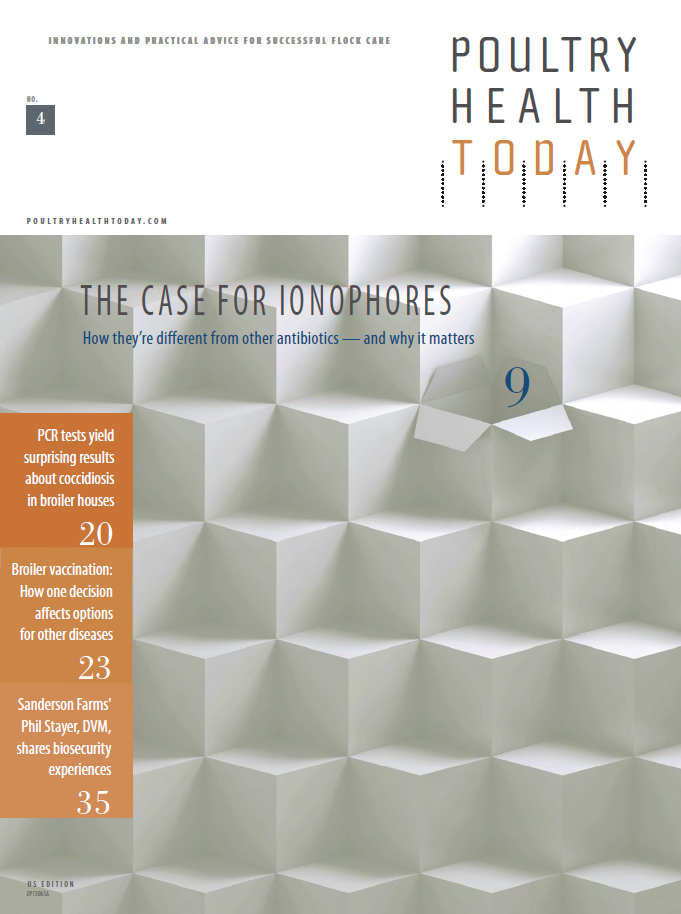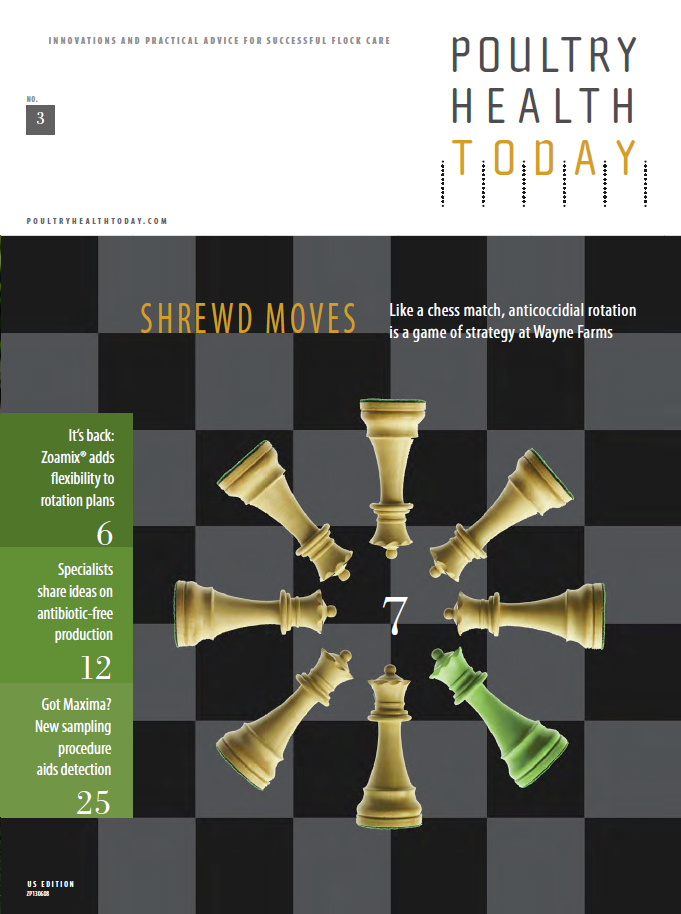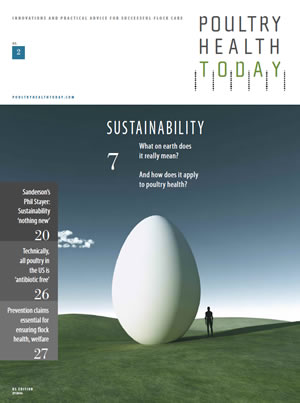

Media experts urge poultry producers to tell their side of the antibiotic story

Should the poultry industry invest more time educating media and consumers about antibiotics and other production topics? Communications experts and dramatic results of a consumer survey suggest it could yield high returns.
For decades the old axiom - "Silence is the hardest argument to refute" - was a safe communications strategy for businesses doing anything that was mildly controversial, even if the practice was perfectly safe and legal.
In the poultry industry, for instance, if questions surfaced in the media about the use of antibiotics in poultry, most producers found it best to avoid the subject, keep their heads down and go about their business. As long as they complied with all the government's regulations and standards, there was no need to engage their critics or defend their position. Besides, they reasoned, the story would fade from the spotlight in another day or two.

That's all changed, however. Between fast and easy Internet access, hundreds of cable channels, the explosion of social media, the rise of "citizen journalism" and the emergence of new digital news hubs and blogs, keeping quiet on controversial issues is no longer a wise option. Because today, if poultry producers don't tell their story, someone else will tell it for them - and not always with great accuracy.
Filling The Vacuum
"The old phrase, 'Nature abhors a vacuum' is accurate," says Bryan Reber, PhD, a professor of public relations at the University of Georgia who specializes in message framing and crisis communications.
"When a vacuum exists, it will be filled by something. And when there is a lack of information on a certain topic, someone is going to provide that information. If you don't provide it, if you don't help frame the story, then you're letting someone else frame it for you."
But telling a story isn't as simple as it used to be, according to Frank Singleton, an independent public relations strategist based in Atlanta with more than 20 years' experience in the poultry industry.
"There was a time where, if an issue came up, you could make a certain pronouncement or claim and, if you made it often enough and passionately enough, you would find an audience and gain some traction," he says. "But today, there aren't any audiences; there are only participants."
He explains that people today go online, do research, vet information, ask questions and then share what they find with family, friends, colleagues or even perfect strangers with similar interests and views. Consumers have, therefore, become more conscientious, diligent and informed — to the extent they can find accurate, balanced information online. They've also become more vocal.


A Dialouge For Every Story
"Consumers are not just gathering news and information; they're participating in the conversation," Singleton says. "We now have a 24/7 news cycle, and there's dialogue that goes around every news story, every claim, every advertisement. It's a brave new world for poultry and livestock producers and the food industry — one that demands a whole new level of transparency."
While that prospect might seem daunting at first — especially to a highly integrated and competitive industry like poultry, which has long placed a premium on confidentiality — the need for transparency actually creates opportunities for producers.
"Now you can engage customers and have a conversation in a deeper, more meaningful way," Singleton adds. "You can create fans and believers around your product."
Social media requires an ongoing commitment to sustain one's point of view, however. "You can't come and go," the strategist cautions. "You have to stay if you want to have credibility and relevance."
Tips For Working With The Media
Media experts offer these tips for talking with foodservice customers and consumers about antibiotics in poultry:
Be Proactive.
If you're convinced antibiotics are essential for maintaining the health, welfare, efficiency and affordability of chicken, don't back down. Be confident in your position and share your knowledge, perspectives and experiences with the press, customers and consumers.
Frame Your Story
Identify your key points and back them with industry statistics, scientific data and your own experience raising safe and healthy poultry. Show passion for what you do and believe, but stick to the facts and give specific examples.
Show Respect
While you might strongly disagree with people or groups with opposing views, acknowledge they exist without criticism, and explain — in a calm, level-headed, professional manner — why you believe their perceptions are off base.
Put It In Writing
Develop fact sheets, Q&As, position papers and other documents or links that articulate your company's position. You can also tap the power of social media and refer people to credible, objective articles and reports.
Help People Understand
Most people tend to put all animal-health products under the same umbrella, whether they're antibiotics, anticoccidials, dewormers or vaccines. Explain your reasons for using antibiotics — treatment, control, prevention, gut health, welfare — and emphasize they are all used under veterinary supervision and in compliance with FDA guidelines and to meet USDA safety standards.
Draw On In-House Expertise
Studies show that veterinarians wield tremendous credibility with consumers (see page 30). Get your veterinarian more involved in talking with your customers' procurement and food-safety personnel.
Never Go Rogue
Before approaching the media or customers with your views, solicit input from your colleagues and, of course, honor your company's communications guidelines to ensure a consistent message.

FRAME YOUR STORY
But first things first. Before producers join or even start a conversation about antibiotics or any topic in the headlines, they need to determine what to say and, more importantly, how to say it.
According to Reber, research shows that most people are moved by statistics. "If you have good information — data-driven, scientific facts, for example — that's very persuasive and useful to people who need to make decisions," he continues. "You need to be proactive and help people understand. Only then can you begin to mold public opinion. Credibility, consistency and understanding how you're going to frame the story are important."
Ideally, Reber says, poultry companies should always want to be "out in front of the story instead of trying to catch it." But what if the story has already sprouted legs and opposing views are already making headlines and influencing opinion?
"If you can set the frame, acknowledge what the critics have to say and then refute it, that's going to be persuasive and credible," Reber says.
"Simply putting your perspective out there without acknowledging that there's another side — especially when the other side has already been told — is problematic."
PUT IT IN BLACK AND WHITE
Developing quick-read fact sheets, Q&As, white papers and other handouts for customers, the press, consumer groups and its own website also can go a long way toward articulating a company's side of the story, Reber adds.
The professor also reminds poultry companies to keep a cool head. "It's human nature, when you feel like you're being attacked, to attack in return," he says. "But that's precisely what you don't want to do."
Tone and tenor are also critical. When talking about antibiotics in poultry production, for instance, keep the conversation positive, informative and professional — never offensive or condescending. "It's not particularly useful to vilify the other side," Reber adds. "A rational, fact-based argument will win the day."
Well, maybe not every day.
He concedes there will always be people on the fringe that will hold their ground no matter what they're shown or told. "There's that 5% that you will never win over," he says. "You can say, 'Here are the reasons that those concerns are unjustified,' but you shouldn't be dismissive. Acknowledge them and try to assuage that concern."
JOIN THE CONVERSATION
Singleton notes that online conversations about antibiotic usage in poultry and other topics will continue with or without the industry's participation. "And to ignore them or to dislike them and then disengage will do your brand or product a great disservice," he adds. "Because then the only commentary is one-sided.
"There are many opportunities to fail at social media," he continues, "but to not engage is certainly to fail. People are much smarter when they've been presented with some facts and a candid, sustained look at the industry."
When talking about antibiotics, he recommends telling foodservice customers and consumers about how they are used — how long, for what purpose, the health and economic benefits they bring. Tell them about the day-to-day involvement of veterinarians. Let them know about FDA regulations and USDA inspections. "I think it's incumbent on the poultry industry, up and down the supply chain, to partner on that," he adds.
Helping Them Understand
At a recent seminar, the US Farmers & Ranchers Alliance (USFRA) emphasized the importance of using everyday language and examples to talk to the public about on-farm antibiotic use. To tell your story more effectively, the trade group suggests building on these clear, simple messages:
Healthy Animals Are The Foundation of a healthy, humane and safe food system.
Animals Get Sick , Justt Like People. Without antibiotic treatment, many of these animals would suffer needlessly and die.
Producers Work Closely With Veterinarians to develop a comprehensive herd health program, which includes many tools such as vaccination, nutrition, proper housing, hygiene and antibiotics.
Unlike People, Animls Can't Stay home and isolate themselves when they're sick. So, to keep disease from spreading, veterinarians tend to treat the whole herd or flock, rather than just the individual animal. (For similar reasons, doctors may prescribe antibiotics for a patient before surgery to prevent infection or for students in a college dorm to control the spread of contagious diseases.)
Producers Use Antibiotics Under Veterinary Supervision - only when needed and in compliance with FDA-approved label instructions. Animals that need treatment are identified and monitored carefully until they recover.
More Issues















